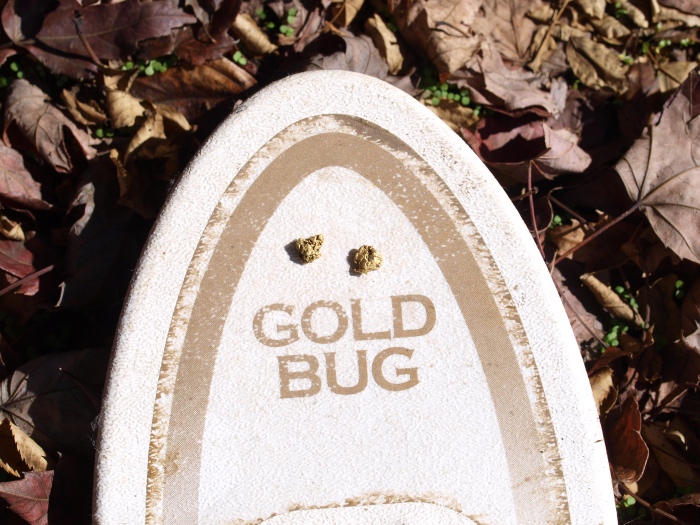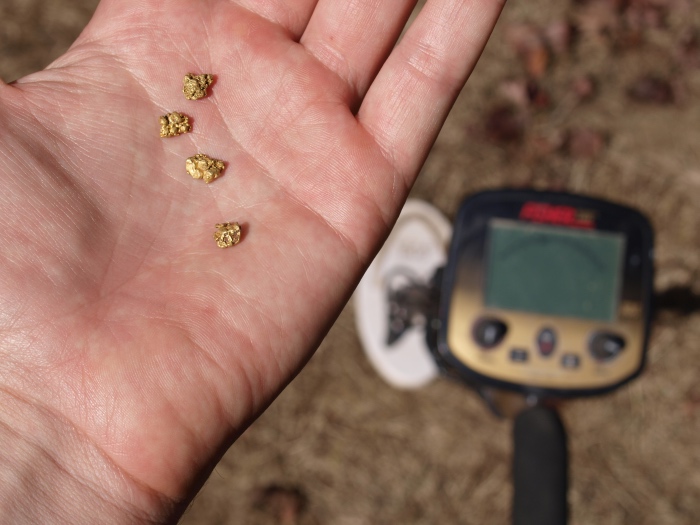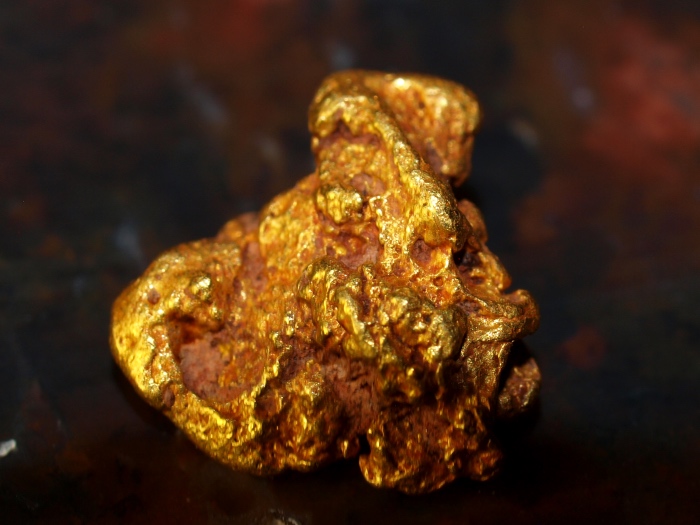
With the increased interest in gold prospecting in recent years, many people are considering the purchase of their first metal detector. The first thing that many people ask is “What is the BEST metal detector for finding gold nuggets?”
Surely if you can determine what the BEST metal detector is, then it will be easy to find a whole pile of gold nuggets, all those nuggets that were left behind by all those “inferior” detectors.
Of course, the answer is never quite as simple as we would like it to be. Anyone who wants to buy a metal detector for gold prospecting should do their research.
How serious do you want to get? A good quality gold detector can cost anywhere from $500 to several thousand dollars, so if your only planning on using it a few times a year, you probably don’t want to go with the most expensive option.
Another thing to consider is what you want to use your detector for. Are you strictly focused on finding gold nuggets, or do you also want to use it to find coins and relics too? Some of the best coin detectors are mediocre at finding gold nuggets. There are some decent all-purpose detectors on the market, but if you want the best, you want to buy a metal detector that is designed specifically for finding gold nuggets.
The 2 main types of gold detectors are very low frequency (VLF) and pulse induction (PI). Lets discuss the advantages and disadvantages of each…
VLF Gold Detectors
A good quality VLF detector for gold prospecting will operate at a higher operating frequency than a standard metal detector. Units that run high kHz will be more sensitive to small gold nuggets and therefore have a huge advantage over most detectors designed to find coins and relics.
As much as we would all like to find big those big 1-ounce nuggets, the truth is that most gold nuggets are much smaller. By having a metal detector that has good sensitivity on small pieces of gold will really increase your odds of finding those elusive nuggets, and this is where a good VLF detector is really an asset.
As with any detector, you generally have a few search coil options. When using a VLF detector, a small search coil is often a good idea because it will increase the sensitivity to small gold. A smaller search coil will also perform better in highly mineralized ground. However, you will get less soil penetration and cover less ground than you can with a bigger coil.

Pulse Induction Gold Detectors
Pulse Induction detectors are a newer technology than VLF detectors, and have become a favorite of serious nugget hunters. Their biggest benefit is their ability to search deep. While most VLF detectors will only find most gold nuggets from 6-12 inches deep (depending on size of the nugget and soil conditions), PI detectors can often find large nuggets at up to 2 feet or more in depth.
They are also especially good at handling highly mineralized ground, which is generally where gold nuggets are found.
PI detectors are limited is their ability to find smaller nuggets. They will often pass right over a small piece of gold that a quality VLF detector will sound off on, although some reviews on some of the newer models that have come out in recent years show that they are improving significantly in that regard. They also have some difficulty finding some forms of specimen or “sponge” gold, that isn’t as dense as a typical gold nugget.
They are larger and heavier, which can be a real burden swinging on a long day, and they are also very expensive, with newer models costing several thousand dollars.

Advantages to Each Type
Since both PI and VLF gold detectors have various advantages and disadvantages when it comes to finding nuggets, many prospectors (and almost all serious prospectors) own both types, and will use either one depending on the conditions they are detecting in.
Often times prospectors will use one type of detector to locate a nugget patch, and then slow down and work the area with both types of detectors. The PI detectors will find the larger, deeper buried nuggets, while the VLF will work best to locate smaller nuggets, or sniffing out nuggets in highly trashy areas. By using both, a prospector can really effectively “clean out” a nugget patch.
Which One Should You Buy?
There are many different opinions on which models of metal detectors are the best for finding gold. Rather than tell you which is “best” I will mention a few different models that have gained popularity over the years, and leave the tough decision to the buyer.
A few of the most popular VLF gold detectors in no particular order are the Fisher Gold Bug II and Gold Bug Pro, White’s GMT, Tesoro Lobo SuperTRAQ, Garrett AT Gold, and Minelab Gold Monster 1000.
With PI detectors, the Minelab is king right now. The most popular recent models are the GPX 4500, GPX 5000, and the newest GPZ 7000. Whites also has a model called the TDI, but very few people use it, and quite honestly it just isn’t as good as the Minelabs.

The Favorites of ACTUAL Gold Hunters
Lots of the stuff you read online is from people who are trying to sell metal detectors, or written by bloggers who I am certain don’t even metal detect. Their info is generic and is basically like reading a user manual rather than explaining the detector itself.
I know dozens of gold prospectors and I metal detect for gold. Make your own decision, but know that the following statement is coming from experience, not just regurgitated information from someone else.
In my experience talking with many successful nugget hunters over the years, the favorite and most common setup I see being used is a quality Minelab PI detector for searching large areas, and the Fisher Gold Bug II
to clean up the small nuggets.
In the past couple years, I have noticed that a lot of prospectors are swapping out their trusty Gold Bugs for the new Minelab Gold Monster 1000. I have used a Gold Monster 1000 and I can see why they are making the switch. It is red hot on small bits of gold, and it couldn’t be simpler to operate. One think I really dislike about it is the ergonomics of the machine, but most people are willing to put up with the weird design in favor of its superior detecting ability.
Good luck and be careful, metal detecting for gold can be addictive!
Next: Metal Detect the “Fringe” Spots to Find More Gold Nuggets

